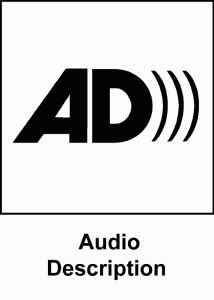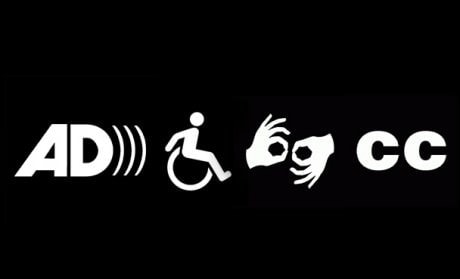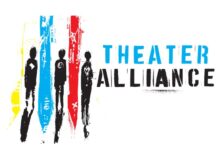Sitting in the wings of many plays, operas, and musicals is a mysterious person known as the audio describer.

Meanwhile, sitting in the audience are people who are blind or have low vision listening through small earpieces provided for free by the theater.
Zuhair Mahmoud used the audio description service at the June 22 matinee of Anything Goes at The Kennedy Center. “Musicals and operas are especially difficult to describe because there is not much dialog. It is important to describe what the actors look like.”
Marianne Metz was the describer at the performance. During a pre-show presentation, she described the characters, the costumes, the set and the scrim. She mentioned the orchestra and conductor, whose head, she noted, could be seen above the pit for the duration of the show.
“What comes in the eye goes out the mouth,” Margaret Rockwell Pfanstiehl once told Reuters. Pfanstiehl, a theater and opera lover who began to lose her vision in her 30s, founded the Metropolitan Washington Ear in November 1974, and audio description has since been adopted in many big-city theaters.

Mahmoud said Metz’s show notes were excellent. She made additional notes so she wouldn’t miss anything important, but she also made impromptu comments, such as “They’re dancing like Fred Astaire and Ginger Rogers.” Another satisfied member of the audience told her afterward that he really appreciated that particular comment.
“There are good describers and bad describers. The good ones know about theater and aren’t too verbose,” says Don Olson, who goes to a lot of audio-described plays and movies.
“Less is more,” agrees Joel Snyder, who has taught audio description in 35 countries and is director of the American Council of the Blind’s Audio Description Project.
But they have to be quick about it, Snyder says. “It takes time to hone in on the essence of what they are seeing and make it shorter,” he said.
According to the Audio Description Project, describers can earn up to $250 for script preparation and $250 per show, but it varies by region. The Kennedy Center uses volunteers but gives them an honorarium of more than $100.
Describers are usually trained at conferences. There will be two training sessions this summer, one on July 10-12 in Columbus, Ohio, at the Audio Description Institute and one on August 19-20 in Washington, D.C., by the Leadership Exchange in Arts and Disability.
The Metropolitan Washington Ear provides free description services for live theater and opera performances at selected theaters in the Washington area. A schedule is available at https://www.washear.org/theaterschedule.htm or (301) 681-6636.
A calendar of audio-described shows at The Kennedy Center is available at https://www.kennedy-center.org/accessibility/schedule.html#Audio-Described.
Other theaters in the Washington area that provide audio description include:
Arena Stage (1101 Sixth Street, SW, Washington, DC)
(202) 554-9066
[email protected]
Folger Theatre (201 East Capitol Street, SE, Washington, DC)
(202) 544-7077
[email protected]
Shakespeare Theatre Company (610 F Street NW; Washington, DC)
(202) 547-1122
[email protected]
Teatro de la Luna (700 South Lang Street, Arlington, VA)
(703) 548-3092
[email protected]
Theater J (1529 16th St NW, Washington, DC)
(202) 777-3210
[email protected]
Author’s note: This is not a complete list. If you know of other venues that provide audio description, please comment below or contact me at [email protected]





